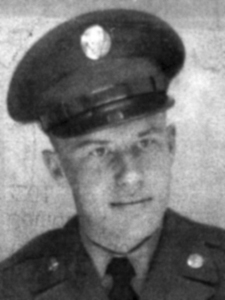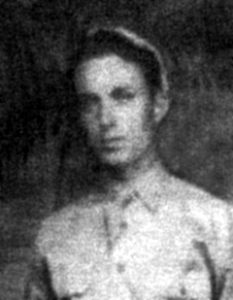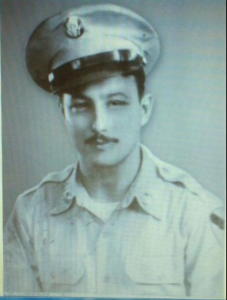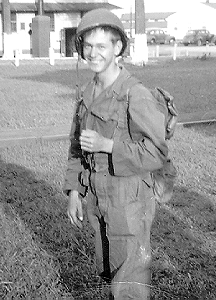Billie Frank Adams, age 30, from Arkansas, Arkansas county.
Service era: Korea
Date of death: Thursday, November 2, 1950
Death details: During the last week of October 1950, Republic of Korea (ROK) Army forces under the control of the U.S. Eighth Army were advancing deep in North Korean territory, approaching the Yalu River on the Chinese-Korean border. Chinese Communist Forces (CCF) struck back in a surprise attack, engaging the ROK 1st and 6th Divisions near Unsan, some sixty miles north of Pyongyang. The U.S. 1st Cavalry Division, with the 8th Cavalry Regiment in the lead, was rushed forward to reinforce the ROK units in the Unsan area. On November 1, the regiment’s 1st Battalion took up positions north of Unsan, while the 2nd Battalion moved to guard the Nammyon River valley west of town, and the 3rd Battalion was placed in reserve at the valley’s southern end. Sergeant Billie F. Adams, who entered the U.S. Army from Arkansas, was a member of the Medical Company of the 8th Cavalry Regiment, 1st Cavalry Division. Elements of the medical company were assigned to each of the regiment’s three battalions during combat actions at Unsan. Late on November 1, 1950, 1st and 2nd Battalions were experiencing rocket and infantry attacks and were forced to withdraw through the Unsan area to Ipsok; they succeeded in extricating their companies but with heavy losses in personnel. On November 2, while in defensive actions near the Nammyon River, and south of Unsan, members of the 3rd Battalion were also ordered to withdraw from the area. The last of the three Battalions to withdraw, the members started moving around midnight, but became cut off and surrounded. They began building a defense perimeter, and the battalion held off several attacks before its members broke out or surrendered. During the course of this battle, SGT Adams went missing; however, no evidence exists that he was captured by the enemy. He remains unaccounted-for. Today, Sergeant Adams is memorialized on the Courts of the Missing at the National Memorial Cemetery of the Pacific.
Source: National Archives, Defense POW/MIA Accounting Agency




